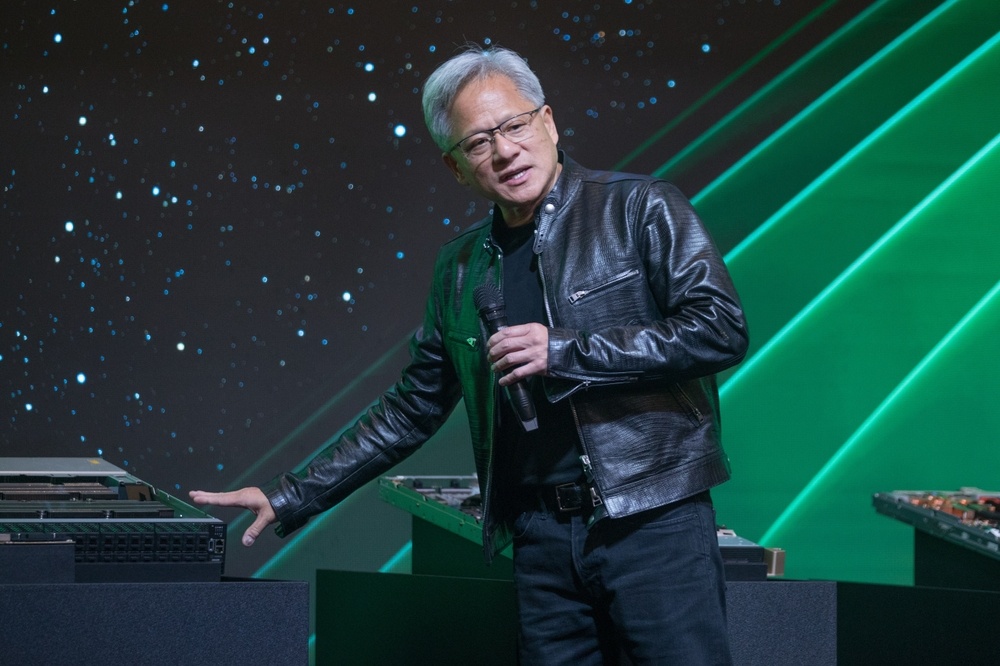Huida's "Three Computers" solution accelerates robot development. How to lay out and seize the lead?
NVIDIA's three-computer solution: Integrating the three stages of training, simulation, and deployment, innovating the robot development process, and shortening the cycle to 5 years. Combining efficient virtual simulation and synthetic data, it promotes the rapid development of robot technology for dangerous operations, labor shortages, and elderly care needs, while building an open ecosystem to drive industrial innovation.

How does Viida's "Three Computers" solution work?
When Deepu Talla, vice president of robotics and edge computing at Viida, gave a speech in Beijing, he proposed the "three computers" solution for the first time, bringing systemic changes to robot development. These three computers cover the core stages of the development process:
- training computers:
- Responsible for training AI models, which is the first step in building a robot's "brain".
- Such systems are usually deployed in the cloud, high-performance data centers or NVIDIA DGX supercomputing platforms. They have powerful computing capabilities and can process massive amounts of data for deep learning.
- analog computer:
- Models used to test the completion of training and realize simulation operations in a virtual environment.
- NVIDIA Omniverse technology allows a large number of simulation tests in virtual scenarios, which is safe and efficient, eliminating the high cost and potential risks of testing in a real environment.
- This technology not only shortens the development cycle, but also narrows the gap between simulation and real performance, and the experimental results are closer to the real world.
- Deploy computers:
- In the end, the materialized computer is directly installed inside the robot and becomes the core brain that controls its behavior.
- NVIDIA Jetson and AGX systems are representative of this type of products, which can meet the needs of different types of robots, covering everything from small consumer to large industrial applications.
By integrating these three computers, Fuida has created a complete development process, which has greatly improved efficiency. It has compressed the development cycle, which may have taken 50 years, to only 5 years, making it a major initiative in the industry.
What trends are driving the rapid development of robotics?
Talla said that in the next 5 to 10 years, robotic technology will undergo unprecedented rapid changes, which is mainly driven by three major factors:
- Requirements for hazardous work environments:
- Robots can replace humans to perform high-risk operations, such as mine operations, deep-sea exploration, and nuclear radiation cleanup, significantly improving safety.
- In particular, certain high-risk job markets have high demand for automation solutions, and robots are the best choice to achieve these goals.
- The problem of labor shortage is growing:
- As career choices become increasingly diversified, the appeal of traditional industries weakens, making the younger generation unwilling to engage in high-intensity, low-return work, and the shortage of labor supply becomes increasingly obvious.
- In addition, the high turnover rates or skills gaps unique to certain industries also require robots as an alternative solution to stabilize production and service efficiency.
- The urgent need for care in an aging society:
- The average life expectancy of the global population has been extended, the proportion of the elderly population continues to rise, and many countries are facing severe pressure on elderly care.
- Robots can provide daily care, companionship and emotional support, becoming an important tool to solve the problem of aging, especially in developed countries.
How does virtual simulation break through the bottleneck of insufficient data?
Robot training relies on large amounts of data, and real-world data collection is difficult. Huida proposed two solutions:
- motion capture technology:
- Use a motion capture kit to record human demonstration operations as reference data for training robots.
- However, this method has limited data volume and cannot fully meet the needs of efficient training.
- Synthetic data generation technology:
- NVIDIA Cosmos provides an innovative "basic model of the world" that can produce highly realistic virtual environments, simulate human operating scenarios, and generate large-scale data.
- In addition, by combining a small amount of real data with a large amount of synthetic data, robot training results are more accurate and the cost of relying on real-world data is significantly reduced.
The development of virtual simulation technology not only accelerates the robot development process, but also makes test results closer to real performance and promotes the implementation of technology applications.
Huida's role and the impact of the development of the robot ecosystem
Huida does not directly produce robots, but focuses on providing core computing technologies and tool chain support by establishing an open platform:
- technology providers:
- Provide complete software and hardware solutions for training, simulation and deployment, allowing partners to quickly build robot development processes.
- Its ecosystem covers researchers, mechanical engineers, software developers, etc., forming a multi-party collaboration model.
- Drivers of ecosystems:
- Huida supports its partners with technical support to focus on the design and manufacturing of physical robots and further promotes industry innovation.
- Such a model not only lowers the entry threshold for the robot industry, but also enhances the competitive vitality of the entire market.
Disclaimer: The views in this article are from the original Creator and do not represent the views or position of Hawk Insight. The content of the article is for reference, communication and learning only, and does not constitute investment advice. If it involves copyright issues, please contact us for deletion.